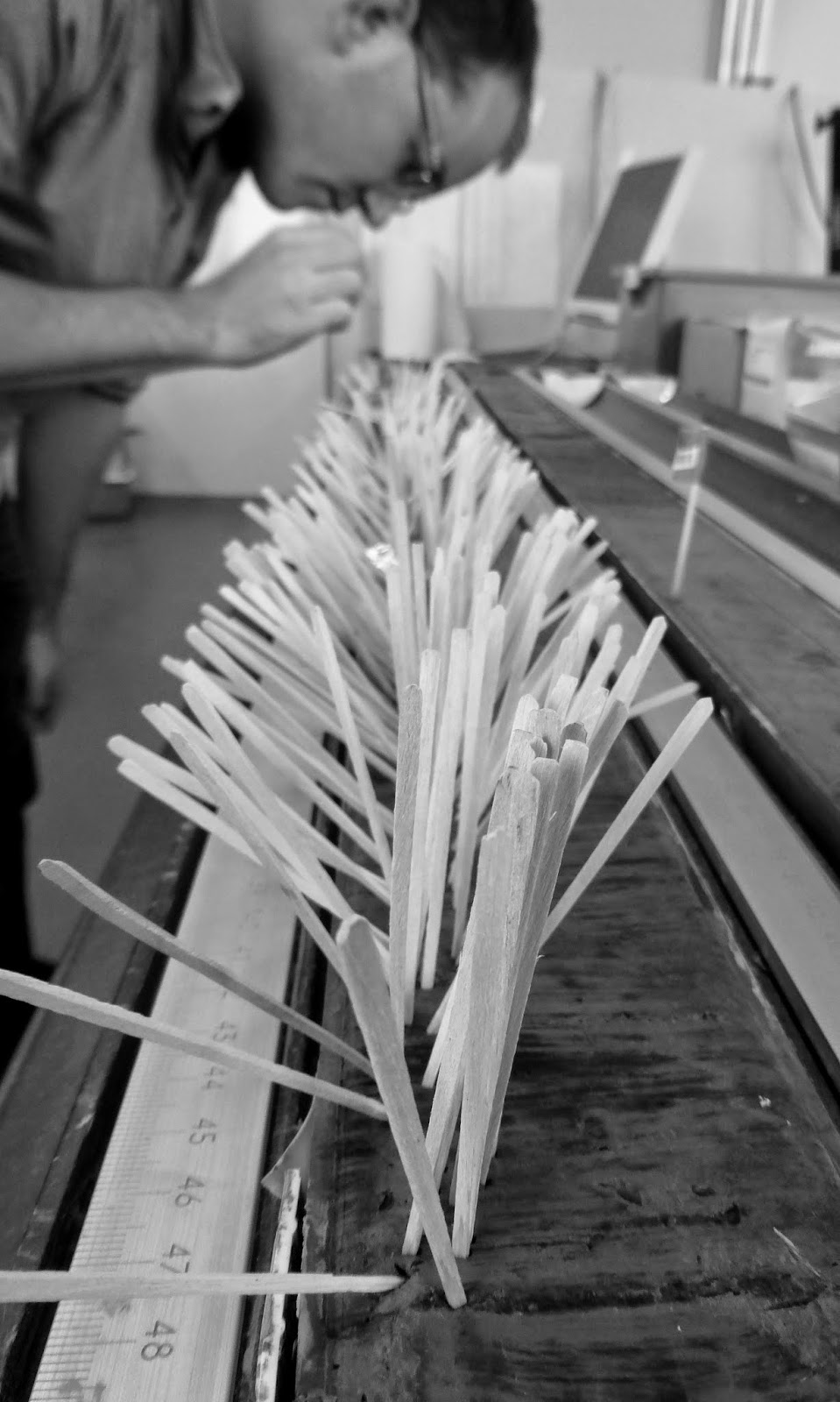 It's time for bunting, streamers and excited faces all round as the operational phase of Expedition 347* comes to a successful close.
It's time for bunting, streamers and excited faces all round as the operational phase of Expedition 347* comes to a successful close. Its mission: to discover if globally significant questions relating to climate forcing, climate systems and microbial responses could be unlocked from the deep sea sediments of the Baltic Sea Basin. As the mission enters the research phase we thought we'd ask BGS Expedition Project Manager Carol Cotterill to give us a glimpse into this monumental collaboration and super feat of engineering and science...
Nothing gives you a sense of scale like a list of ever increasing numbers, here's some I picked from the operations of 347 Expedition:
6 drilled sub-basins
17 scientists from 10 countries sailed
24 hour operations with 2 shifts of 12 hours
51 days working offshore, 66 including mobilisation, de-mobilisation and transits
65 people aboard the Greatship Manisha including scientists, BGS, ESO staff, drillers and ships crew
206 feet of shipping containers! That's 13 boxes, 20ft each, converted into offices, core curation, petrophysical and clean geochemistry and microbiology labs
1,623m of core recovered totalling 91% overall recovery
9,300 offshore samples taken
373,000 km2 of areal extent of sediments feeding into the glacially eroded Baltic Sea Basin and investigated by IODP
But this is only half of it, the offshore half. Once recovered onto the ship the cores and samples were stored and then transported, back to the IODP Bremen core repository at MARUM, in temperature controlled units in preparation for the onshore phase.
 This phase lasted 24 days, with 65 staff, including the full complement of 31 scientists from 12 countries, processing, recording and sampling the cores acquired offshore. In total over 38,500 samples were taken for post-cruise research encompassing disciplines including palynology, geochemistry, paleomagnetics, glacial deformation, deep biosphere communities, micropaleontology and physical properties of the sediments.
This phase lasted 24 days, with 65 staff, including the full complement of 31 scientists from 12 countries, processing, recording and sampling the cores acquired offshore. In total over 38,500 samples were taken for post-cruise research encompassing disciplines including palynology, geochemistry, paleomagnetics, glacial deformation, deep biosphere communities, micropaleontology and physical properties of the sediments. But why the Baltic and what were our aims? Summarised below are the four over-arching research themes (covered in more detail here):
1. Climate and sea level dynamics of marine isotope Stage (MIS) 5, including onsets and terminations;
2. Complexities of the last glacial, MIS 4–MIS 2;
3. Glacial and Holocene (MIS 2–MIS 1) climate forcing; and
4. Deep biosphere in Baltic Sea Basin (BSB) sediments.
 The location of the BSB in the heartland of the recurrently waning and waxing Scandinavian Ice Sheet (SIS), has resulted in a complex development: repeated glaciations of different magnitudes, sensitive responses to sea level and gateway threshold changes, large shifts in sedimentation patterns, and high sedimentation rates. Its position also makes it a unique link between Eurasian and northwest European terrestrial records.
The location of the BSB in the heartland of the recurrently waning and waxing Scandinavian Ice Sheet (SIS), has resulted in a complex development: repeated glaciations of different magnitudes, sensitive responses to sea level and gateway threshold changes, large shifts in sedimentation patterns, and high sedimentation rates. Its position also makes it a unique link between Eurasian and northwest European terrestrial records. Therefore, the sediments of this largest European intracontinental basin form a rare archive of climate evolution over the last glacial cycle. High sedimentation rates provide an excellent opportunity to reconstruct climatic variability of global importance at a unique resolution from a marine-brackish setting. Comparable sequences cannot be retrieved anywhere in the surrounding onshore regions.
 Furthermore, and crucially, the large variability (salinity, climate, sedimentation, and oxygenation) that the BSB has undergone during the last glacial cycle makes it optimal for new research on the deep biosphere and its evolution and biogeochemical processes in a changing environment.
Furthermore, and crucially, the large variability (salinity, climate, sedimentation, and oxygenation) that the BSB has undergone during the last glacial cycle makes it optimal for new research on the deep biosphere and its evolution and biogeochemical processes in a changing environment.The science party are currently busy processing their samples and coming up with preliminary results. We hope to see some of the initial results presented at the AGU Fall Meeting in San Francisco. However, when asked for possible titles for papers at the end of the onshore phase, the enthusiastic science party gave me 73 potential papers!! This could be the most successful MSP to date for ECORD, IODP and BGS.
Thanks for reading and special thanks to those of you who followed us through GeoBlogy and the IODP expedition online logbook.
Carol.
* [editor] being that the full expedition name and accreditation is almost as long as it's recovered core we popped all this info to the end of the blog. Of course without the excellent collaboration between all these good people and partners the expedition would've never got afloat so a humble thanks from BGS to those friends mentioned below:
The 'IODP Expedition 347 Baltic Sea Paleoenvironment' was the fifth Mission Specific Platform project organised and carried out by the European Consortium for Ocean Research Drilling (ECORD). As the one of the lead partners within the ECORD Science Operator, BGS were tasked with the logistical planning and vessel contracting, scientific staffing and operations for both the offshore and onshore phases of the Expedition, along with colleagues from the European Petrophysics Consortium and the IODP Bremen Core Repository, MARUM.

Comments